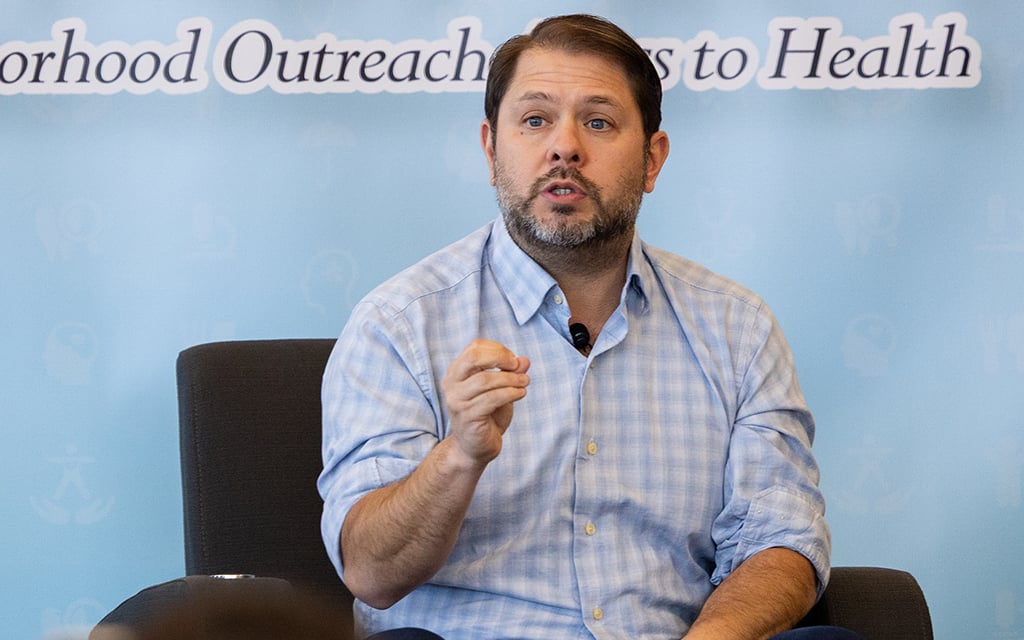WASHINGTON – Deep cuts at federal agencies are hitting Americans who served in uniform especially hard.
Veterans account for 6% of the U.S. population but 30% of all civilian federal workers. And even as veterans lose their jobs at higher rates, President Donald Trump’s cost-cutting push is squeezing the Department of Veterans Affairs, which is likely to impact access to medical care, disability payments, higher education and housing.
The Carl T. Hayden VA Medical Center in central Phoenix has already lost workers under a directive from Veterans Affairs Secretary Doug Collins to reduce staff nationwide by 15%.
Sen. Ruben Gallego, D-Arizona, has cried foul.
“The idea that you are going to cut 15% from the Phoenix VA by June and that it’s not going to cut service – it’s not just laughable. It’s sinful,” Gallego, a Marine combat veteran, said during a recent Senate Veterans Affairs Committee hearing.
With Congress controlled by Republicans, Gallego and fellow Democrats have few options.
The Arizona freshman put a freeze on VA nominations in protest, though the department’s top jobs are already filled, so that move is largely symbolic.
Before Trump put billionaire Elon Musk in charge of the Department of Government Efficiency, or DOGE, the federal civilian workforce stood at 2.4 million, not counting active duty military or the Postal Service, according to the Pew Research Center and federal data.
About 611,000 of those workers were veterans, according to the Partnership for Public Service.
At the VA alone, a 15% staffing cut would mean 636 employees in Arizona across several facilities.
The VA announced Feb. 13 that it had fired 1,000 out of about 462,000 full-time employees. The VA said the move will save $98 million per year and it planned to “redirect all of those resources back toward health care, benefits and services for VA beneficiaries.”
Collins has also offered assurances that essential services won’t be impacted.
A 15% cut would go much deeper.
Gallego and other critics say it’s inevitable that delays will grow for disability claims, home loan applications and other benefits. Wait times to see a doctor, dentist or therapist or get treatment for post-traumatic stress disorder will also grow, they say.
The average processing time for a claim is 137 days, according to the VA. That was before the cuts.
Phoenix resident Reggie Yates said he is concerned about the impact on his care.
Yates, 79, was drafted in 1965 and served as a paratrooper during Vietnam. Years after he retired from the Army in 1990, he began suffering anxiety attacks. Going to the store and asking for help seemed daunting. He struggled with anger and daily episodes.
“It was a night and day difference after I went to the VA,” he said.
Yates has been seeing a PTSD and anger management support group at the Phoenix VA Hospital once a week for over 15 years. He enjoys being around other veterans and appreciates being cared for by professionals who are familiar with his history and conditions. He also relies on the VA for dental work and general health care.

Elon Musk addresses the Cabinet and the White House press pool on Feb. 26, 2025, in the Cabinet Room. (Photo by Molly Riley/White House)
“It’s a lifeline, and I worry about anyone in that support group potentially hurting themselves or others if they aren’t in care,” he said.
The Trump administration has not disclosed how many veterans have been laid off, by state or nationwide.
Musk has said the goal of DOGE is to save at least $1 trillion. The White House has not specified how many jobs DOGE will ultimately eliminate.
Nationwide, 56,000 federal workers have already lost jobs, according to a tally from The New York Times.
Through Feb. 25, less than five weeks after Trump took office, 6,000 veterans had already been fired, according to a report from Democrats on the House Appropriations Committee.
News of the planned VA cuts leaked in early March when the department’s chief of staff, Christopher Syrek, sent an internal memo to regional officials announcing a goal of returning to 2019 staffing level – 399,000 employees, down 83,000 from the current payroll.
Gallego has said he won’t allow confirmation votes on VA nominees until the cuts are reconsidered. So far that has stalled three nominees, all veterans: Samuel Brown to oversee national cemeteries; James Baehr to serve as general counsel; and Richard Topping to serve as chief financial officer.
Under Senate rules, a single senator can declare that he would object to holding a vote on a particular nomination. That can delay confirmation indefinitely.
Like Yates, Gallego has sought PTSD treatment and other medical care from the VA.
“I’m going to fight for these veterans like they fought for us,” he told CNN last week.
By law, veterans receive preference in federal hiring.
That makes the disproportionate impact of the DOGE cuts unconscionable, said Omar Algeciras, a 20-year Air Force veteran who works in Tucson at the Department of Labor’s wage and hour division.
“It’s not only unfair, it’s someone going back on their promise, their commitment,” said Algeciras, vice president of the American Federation of Government Employees Local 2391.
AFGE represents 820,000 federal workers across the country and has vehemently opposed the cuts.
“The VA has been severely understaffed for many years, resulting in longer wait times for veterans in need. The DOGE plunder of career VA employees, adding to the illegal mass firings of thousands of probationary employees, can only make matters worse,” the union said in a statement.


